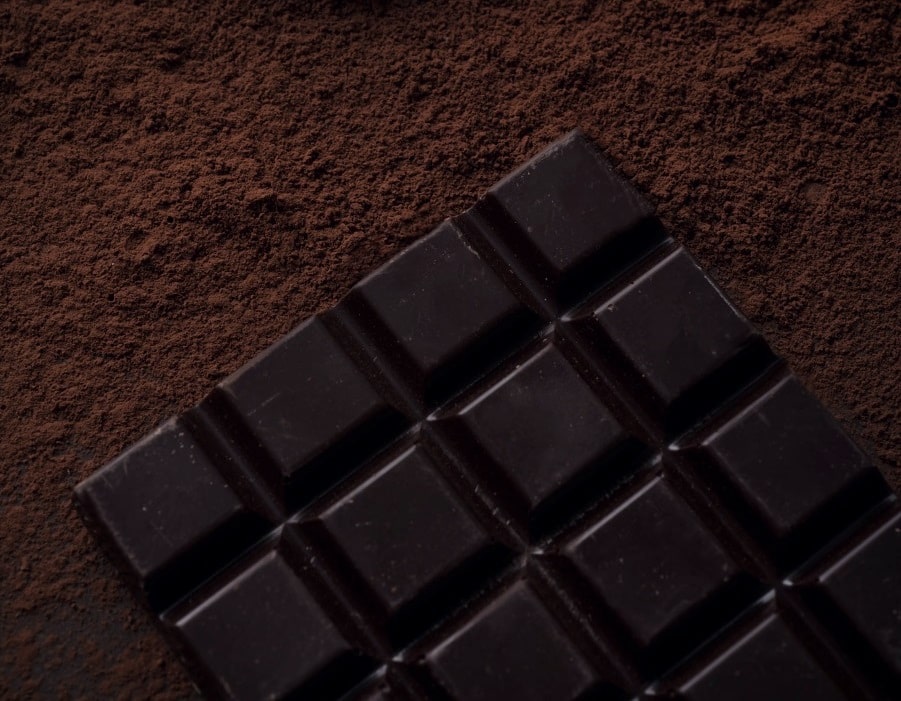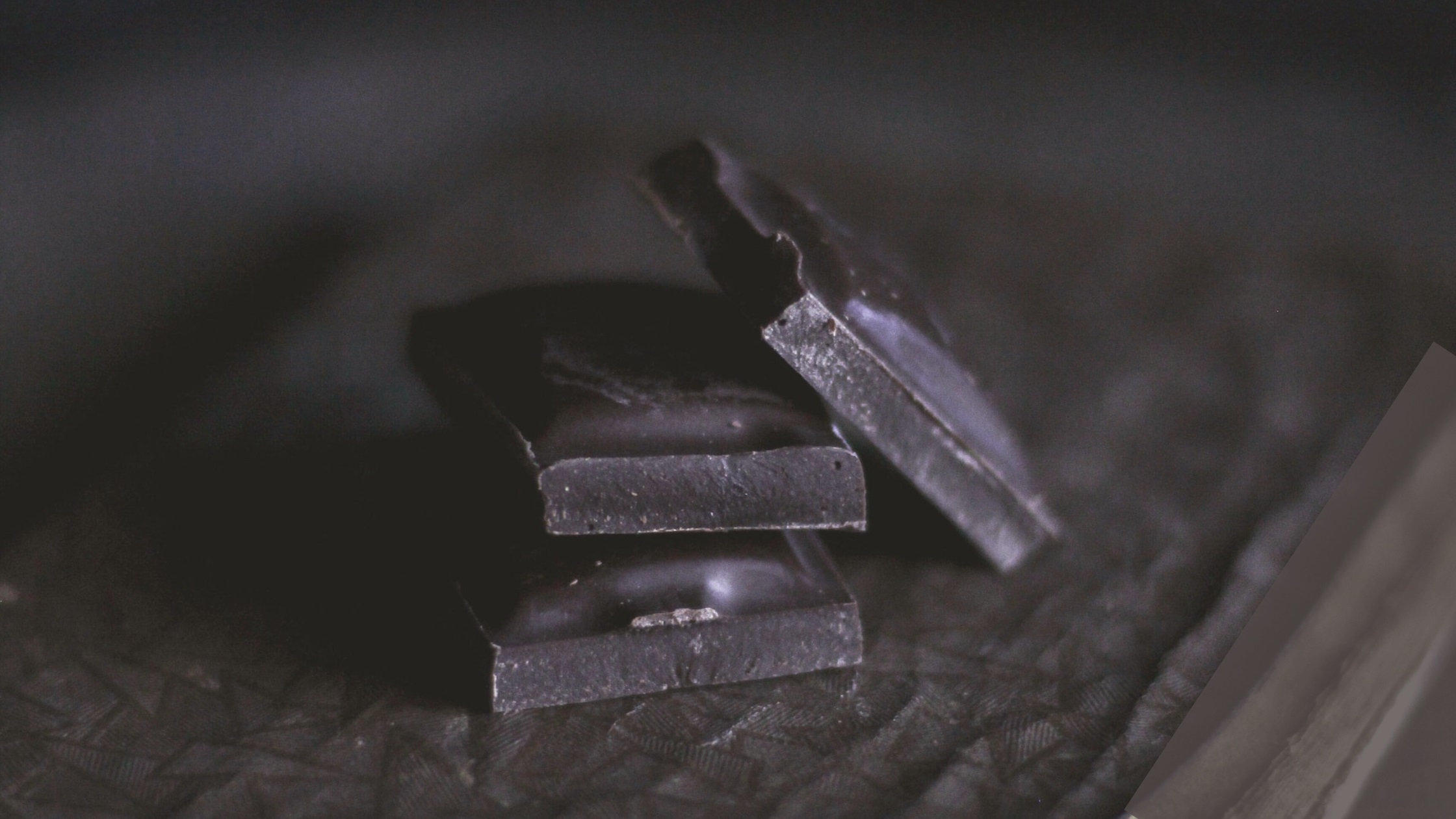How The Myth Of Black Chocolate Scams Dark Chocolate Lovers
Extra dark. Noir. Bitter. Full-bodied.
Dark chocolate for true connoisseurs.
Coping with the run-of-the-mill brand propaganda, it seems that we—high-quality product chocolate lovers—have made it completely wrong so far. After months—perhaps, years—of education, emotional and financial investment in buying, tasting, and discerning between a note of red fruits, nuts, and jasmine in a bar of dark chocolate made with the utmost care.
Since our first appreciation of chocolate in our infancy, commercial brands of the so-called “black chocolate” made us believe that the best chocolate product for our enjoyment, health, and palate had to be directly correlated with its percentage (the higher, the better). Consequent to such a ratio, the chocolate ought to be über-dark like the color of charcoal and extra bitter because naturally-processed cacao beans are supposed unbearably bitter.
Nothing more misleading to well-informed chocolate lovers could be fabled!
What can be called Extra Dark or Black Chocolate?

As no single definition or regulatory framework can explain at which percentage of cocoa dark chocolate is genuinely “dark,” even less so, there’s one for extra dark chocolate. However, we typically consider this type of chocolate when cocoa percentages range between 85% and 99%—whereas “average” dark chocolate is around 60‒75%.
But are all extra dark chocolate bars the same?
Fortunately, no.
An upmarket chocolate brand that carefully selects fine flavor cocoa beans and meticulously executes a tailor-made process maximizing the quality of the cacao beans can produce chocolate that is anything but bitter and black, even at extremely high cocoa percentages. For example:

Original Beans Cusco Chuncho 100%
Despite being only made from pure cacao mass (the ground cacao nibs), this bar has extremely low bitterness, a brown color, and a rainbow of delicate flavors ranging from fruity to floral. This is an example of one of the best dark chocolate bars one can taste—even if it cannot technically be considered chocolate for missing added sugars, paradoxically!
More experience is required to spot the differences between extra dark chocolate brands that are more accessible to the mass consumer:

Michel Cluizel Noir Infini 99% vs. Perugina® Nero® 95%
Although the Michel Cluizel Noir Infini 99% tablet has a slightly higher percentage of cacao than the Perugina® Nero® 95%, it doesn’t intimidate with the unnatural opaque black color of the latter.
How is it possible? Let’s start with the ingredients list and tasting impressions:
Perugina® Nero® 95%
Ingredients: cocoa mass, sugar, cocoa butter, sunflower lecithin, natural vanilla extract.
Impressions:
• the color is so black that, even under natural light, a single square appears like a stub of charcoal;
• the bar smells so burned that it is like opening and sniffing into a tobacco can;
• the mouthfeel is remarkably astringent (it dries the palate), like swallowing a teaspoon of cheap cocoa powder fit for baking.
Michel Cluizel Noir Infini 99%
Ingredients: cocoa mass, sugar, ginger, cinnamon, vanilla powder.
Impressions:
• the color is a matte dark brown with pinkish mahogany highlights;
• the aroma is smoky—but not unpleasantly burned—suggesting a high-temperature roasting with a wet pre-drying to intensify the formation of still pleasant flavor compounds;
• the flavor is archetypally cocoa, with moderate acidity, high bitterness but nearly indistinguishable astringency.
As a side note, the Norman Michel Cluizel was the first brand in history to make dark chocolate at unusually high cocoa percentages, with their two 85% and 99% cacao tablets launched back in 1989. In the same year, Lindt immediately jumped on the bandwagon to introduce their extra dark “Excellence” line.
Alkalization is the difference between cheap black chocolate and pleasant extra dark chocolate
A noticeable difference between the two above-mentioned extra dark tablets stands out to the palate of an expert chocolate taster. A process known as alkalization puts the black color and burnt flavor of the Perugina Nero chocolate at a much lower quality level than the Michel Cluizel Noir Infini.
The technique of alkalization—also known as dutching—was first introduced by the Dutch chemist Coenraad Johannes van Houten in 1828. The process consists of treating the cocoa nibs with an alkali solution (the opposite of an acid solution) containing salts like potassium or sodium carbonate. The alkali treats the cocoa nibs by raising their pH from 5.5 to near neutrality at 7, intensifying the cocoa color and flavor to reach those infamously-unnatural but broadly-romanticized black hues.
When a food brand processes chocolate with alkali to make it more intense in color and bitter in flavor, it doesn’t have the aim to “elevate” our senses and make us acquire a blessed gourmet status or the benevolence to gift us the experience of the “authentic” nuances of dark chocolate. At all. It, instead, relies on alkalization as a shortcut to compensate for the excessive acidity and astringency of badly-fermented cocoa beans coming from uneven lots rushed to be processed in bulk as soon as possible.
Taking a closer look, if alkalization is necessary to make up for all the nastiness of low cocoa bean quality, let’s imagine how a “black” chocolate bar would be inedible if it weren’t deeply processed to at least disguise it as edible charcoal!
And if we further wished to check out where mankind is at when it comes to understanding high-quality dark chocolate, then let’s visit the Amazon mayhem.
The flavor wheels designed to appreciate the wonders of real specialty chocolate could be entirely rediscussed according to the cheap chocolate brands, since “charcoal” and “burned” are no longer sensory defect descriptors but flavor notes to be found in good chocolate. And that’s not all. You can even waste a bottle of Cabernet Sauvignon to have the illusion of arranging a sophisticated tasting whereas the notoriously hearty and hefty notes of the red wine would attempt to strategically dim all the gross carbonized ‘flavors’ of black chocolate!
Being challenging to describe in plain words the kind of aversion that regularly afflicts me against the myth of ‘Black Chocolate,’ I tried to condense the substance and form of the scam with self-explanatory visuals:
On the one hand, the chocolate brand tries to describe the product with consummate attributes that refer to that ‘deep intensity,’ ‘full body,’ and ‘bitterness’ extra dark chocolate is supposed to possess. On the other hand, the mass consumer, with a hazardous pretension to trade off quality with a low price, reviews the product with five stars, despite an inconsistent and even contradictory logic that turns into a profound state of cognitive dissonance that reads like: “It’s not the chocolate that tastes so awful, trusting our initial intuitions. No, it’s rather our “unfamiliarity.” Our nose and palate aren’t still accustomed to the inebriating scents of burned and alkalized chocolate.”
Even more satyrical is the very chocolate brand that, for being sincere in describing the chocolate in its realm of normalized inedibility, it also self-sabotages its seriousness and trustworthiness. It’s all good news for those who know a little more than the average about high-quality chocolate and, unarguably, much less so for the lion’s share of consumers that keep perpetuating a distorted perception of how dark chocolate at high percentages should taste. Recommending black and bitter chocolate (processed with alkaline chemicals) would also mean championing a nutritionally inferior product despite the high cacao percentage, since alkalization tends to alter and inhibit the absorbtion of the beneficial nutrients for health naturally contained in the cacao nibs.
High cacao percentages in chocolate are not always proportional to its quality and taste. To avoid rewarding the insidious scam of black chocolate, chocolate lovers must learn to discern whether the dark chocolate they chose was made starting from good cacao beans and natural steps or messed up with corner-cutting manipulations like alkalization.




As a consumer who enjoys dark chocolate, I feel privileged to be enlightened by the information provided. Although I have not felt appeal to indulge in “black chocolate” thus far, it is meaningful to be educated about the inferior process used to make it, despite the promotional rhetoric used to describe it as the ultimate in dark chocolate experience. I thoroughly enjoyed and appreciated this article.
“I only like bitter chocolate.” (Question we hear at our shop frequently.)
“We’re sorry, we don’t sell bitter chocolate. We have some beautiful 100% bars, though.” (Our usual answer.)
Many folks seem to believe that chocolate has to taste bad to taste good. We spend a lot of time re-educating customer. Fortunately, they usually leave the shop happy to know it’s okay to just enjoy the chocolate without being told what’s “good.”
Thanks for another informative post!
Thanks, Rich! You provided the perfect anecdote.
Great article! I finally understand why I enjoy cacao beans/nibs much more than very dark chocolate.